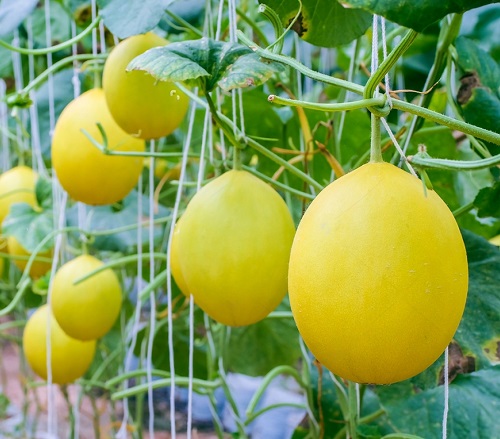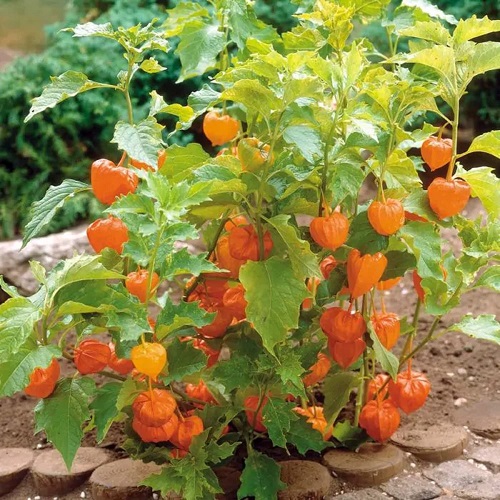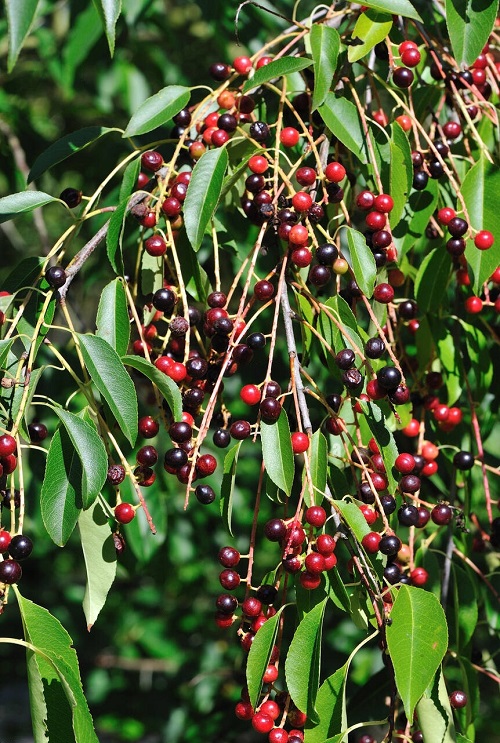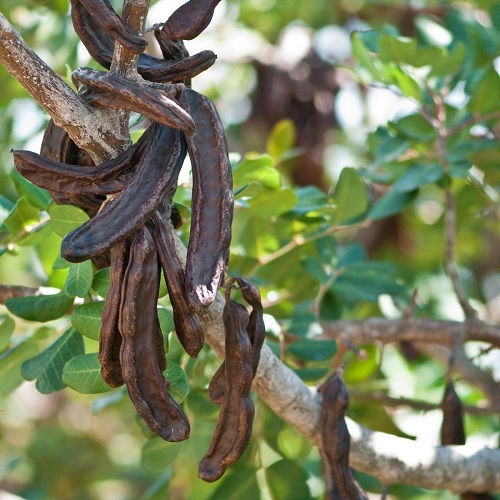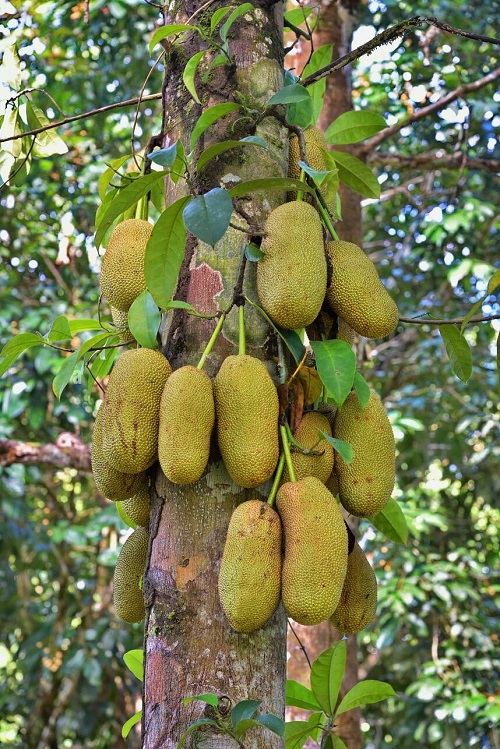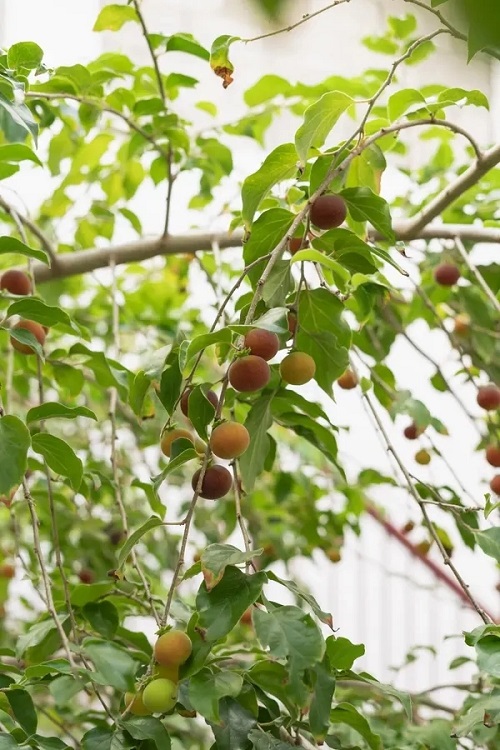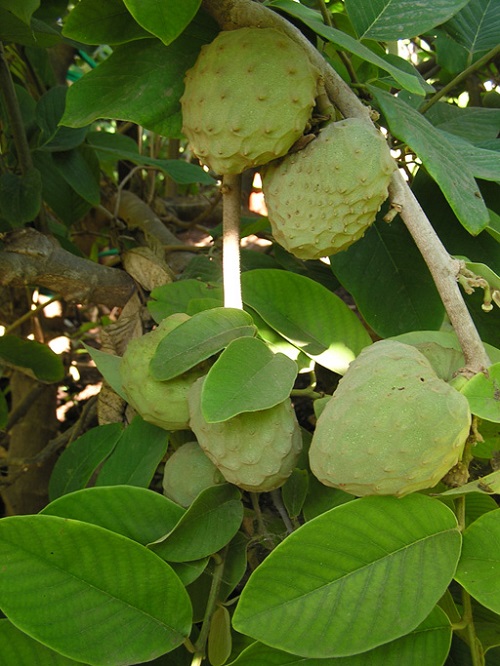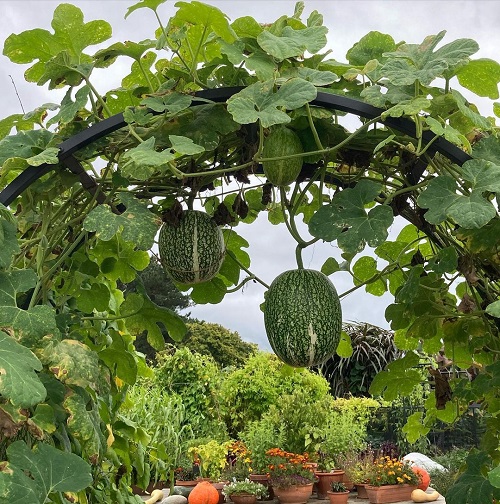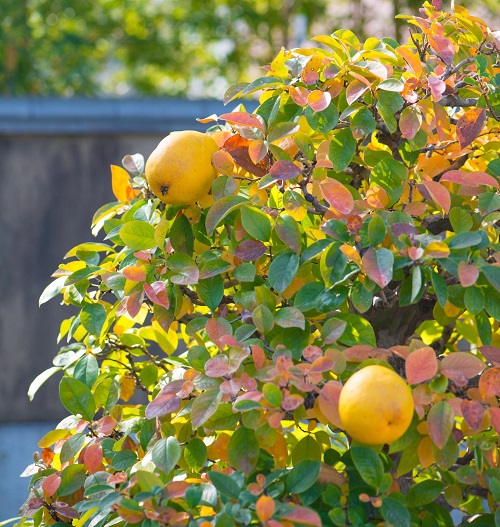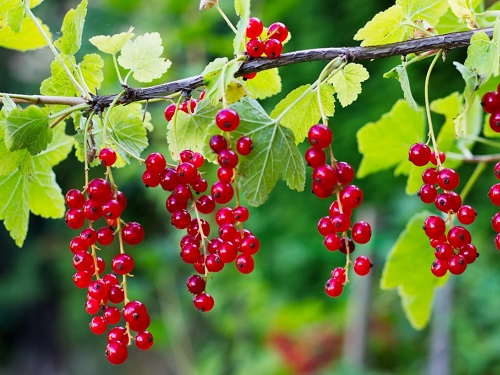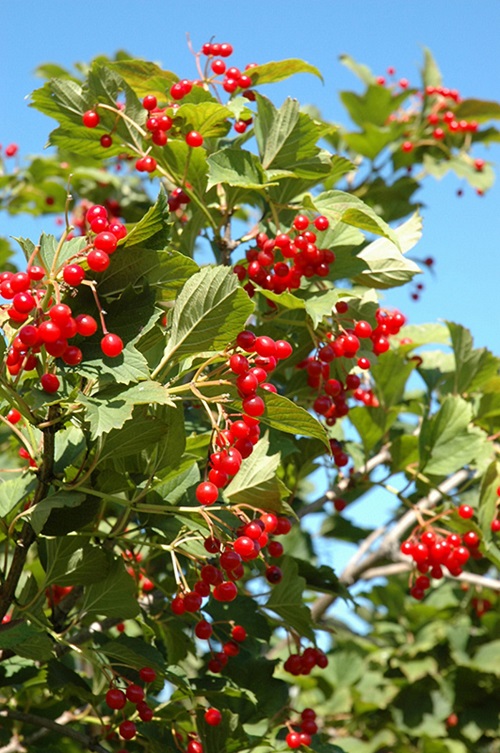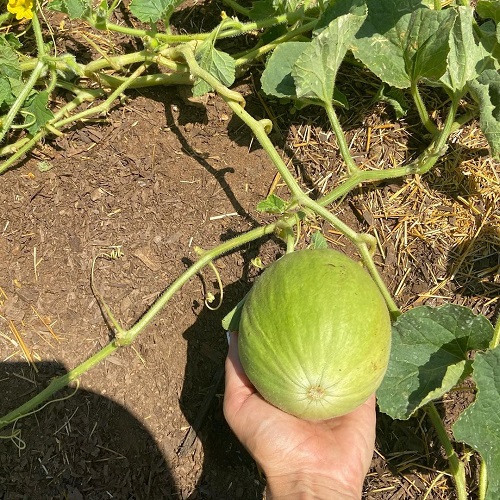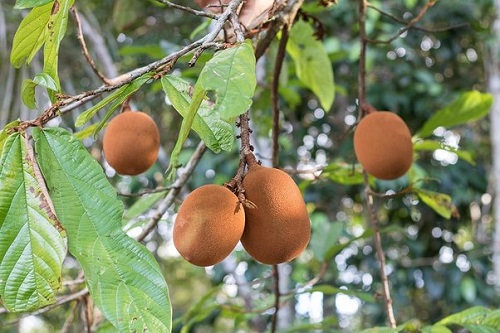Fruits are nature’s sweetest gifts, and there are so many of them to choose from! Today, we’re going to take a closer look at Fruits That Start With C.
Whether you’re a fruit lover or just looking to add some variety to your fruit garden, keep reading to learn about the most delicious and nutritious Fruits That Start With C!
Here is a complete list of Fruits That Start With A
Fruits That Start With C
1. Cactus Fruit
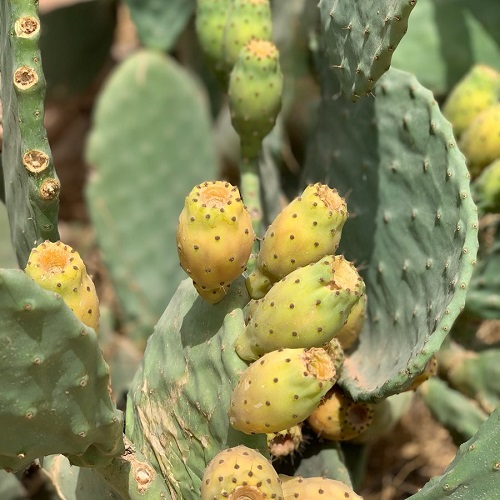
Botanical Name: Opuntia
USDA Zones: 4-9
First on the list of fruits that start with C is prickly pear. Cactus fruit is a sweet and juicy fruit that is high in fiber and vitamin C.
Here is How to Grow Prickly Pears
2. Calamondins Fruit

Botanical Name: Citrofortunella microcarpa
USDA Zones: 9-11
Calamondins are a type of citrus fruit that is native to the Philippines. The fruit is small and tart and is often used to make marmalades, preserves, and marinades.
Learn about Care and Growing Calamansi Trees here
3. Caimito
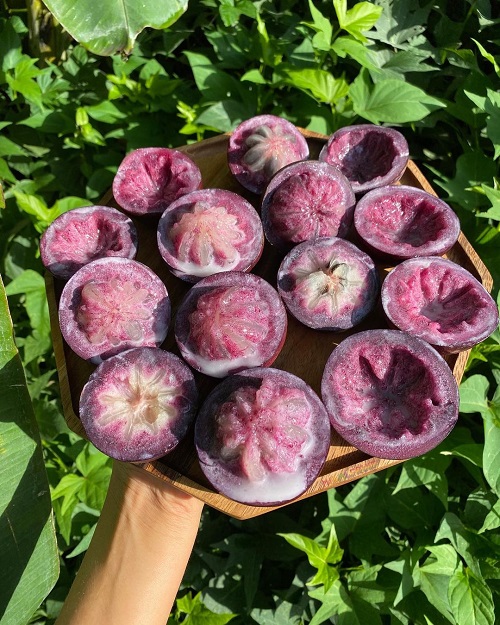
Botanical Name: Chrysophyllum cainito
USDA Zones: 10-11
Caimito, also known as star apple, is a tropical fruit that is native to Central America and the Caribbean. The fruit has a sweet, creamy flesh.
4. Calabash

Botanical Name: Crescentia cujete
USDA Zones: 10-11
Next on the list of fruits that start with C is Calabash. It is native to tropical regions around the world and grows best in full sunlight.
5. Camu Camu Berry
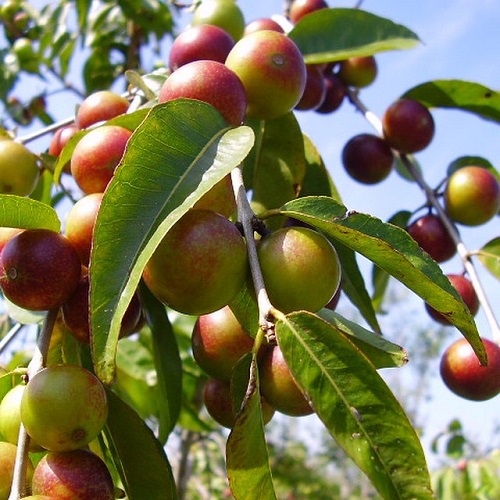
Botanical Name: Myrciaria dubia
USDA Zones: 9-11
Camu camu is a small berry that is native to the Amazon rainforest in South America. The fruit is high in vitamin C and is often used to make juices and supplements.
Here are the Best Types of Wild Berries to Grow in a Garden
6. Canary Melon
Botanical Name: Cucumis melo L. (Inodorus Group) ‘Canary’
USDA Zones: 10-11
Canary melon is a type of melon with bright yellow skin and sweet, juicy flesh. To grow Canary melon, you’ll need a warm climate with plenty of sunlight.
7. Candlenut
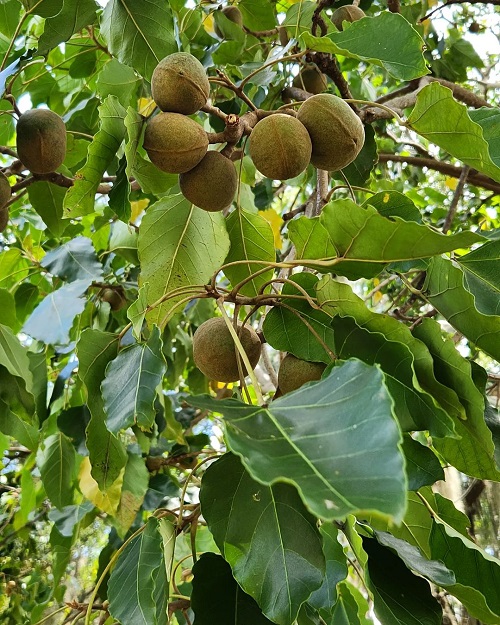
Botanical Name: Aleurites moluccanus
USDA Zones: 10-12
Candlenut is a small, round fruit that start with C with a hard shell that is used in cooking. Its fruit belongs to the Euphorbiaceae family.
Learn Everything About Sundew Plant Care Indoors here
8. Canistel
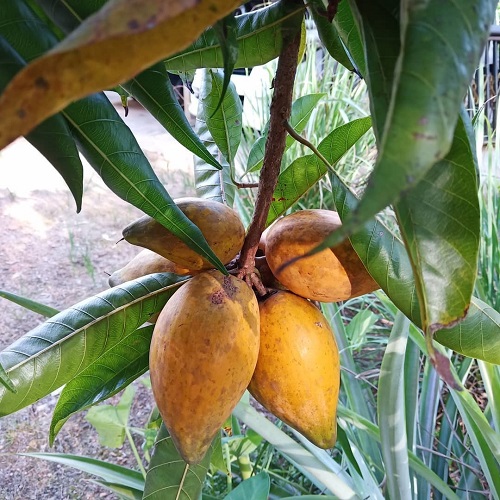
Botanical Name: Pouteria campechiana
USDA Zones: 10-11
Canistel, also known as eggfruit, is a tropical fruit that is native to Central America and the Caribbean. The fruit has a sweet, custard-like texture and can be eaten fresh.
9. Cantaloupe
Botanical Name: Cucumis melo var. cantalupensis
USDA Zones: 4-10
Cantaloupe is a type of melon that’s both sweet and refreshing. It’s packed with nutrients like vitamin A and potassium, and it’s also a great source of hydration.
Here is How to Grow Cantaloupes Vertically
10. Caper

Botanical Name: Capparis spinosa
USDA Zones: 8-11
Caper is a shrub that is native to the Mediterranean region. The flower buds are harvested and used to make the culinary condiment known as capers.
11. Cape Gooseberry
Botanical Name: Physalis peruviana
USDA Zones: 8-11
Cape gooseberry, also known as ground cherry, is the next fruit that start with C. It requires full sun and well-draining soil.
Learn about How Deep Do Tomato Roots Grow here
12. Capulin Cherry Fruit
Botanical Name: Prunus serotina
USDA Zones: 3-9
Capulin cherry, also known as wild black cherry, is a fruit tree that is native to Mexico and Central America. The fruit is edible and has a sweet, slightly tart flavor.
Check the Complete List of Fruits that Start with O here
13. Carambola
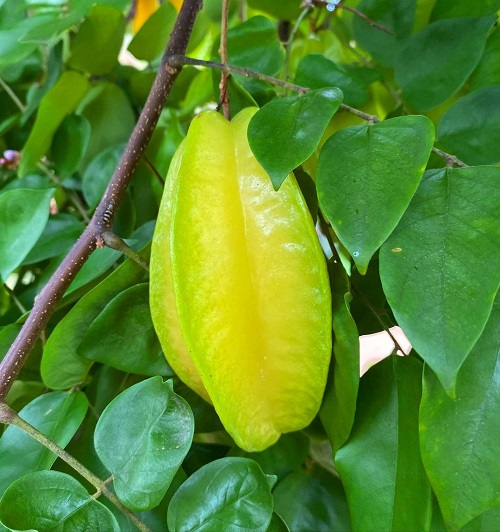
Botanical Name: Averrhoa carambola
USDA Zones: 9-11
Carambola, also known as star fruit, is a tropical fruit that’s shaped like a star when sliced. If you’re growing a carambola in your garden, you’ll have a delicious and exotic fruit!
Learn about Growing Starfruit (Carambola) here
14. Cardamom
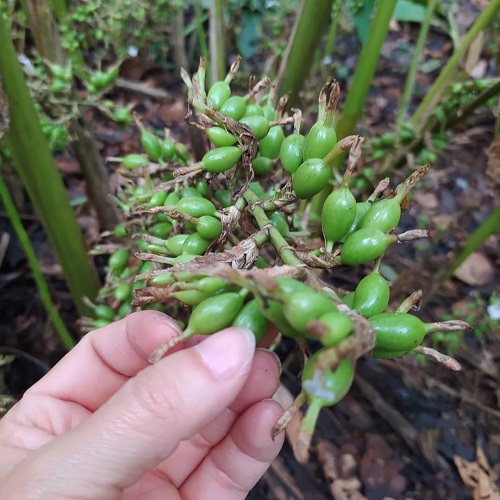
Botanical Name: Elettaria cardamomum
USDA Zones: 10-13
Cardamom is a dried fruit that is used as a spice. The spice is made from the seeds of several plants in the Zingiberaceae family, which is native to Asia.
Learn How to Grow Cardamom Plant in a Pot here
15. Carob
Botanical Name: Ceratonia siliqua
USDA Zones: 9-11
Carob is a fruit that grows on a tree called Ceratonia siliqua, which is native to the Mediterranean region. The fruit is sweet and has a chocolatey flavor.
Here is How to Grow Carob Tree
16. Cashews
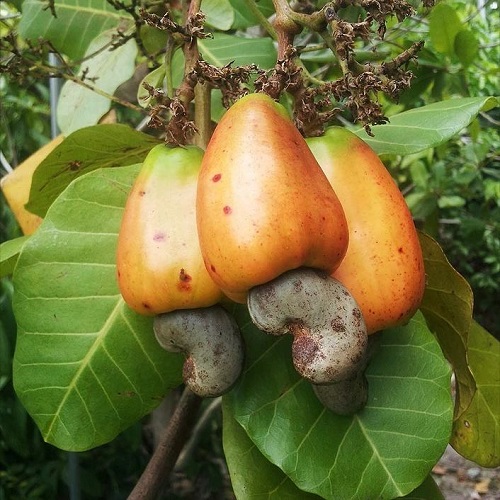
Botanical Name: Anacardium occidentale
USDA Zones: 10-11
Cashews are a type of nut that grows on trees. The cashew tree belongs to the Anacardiaceae family and is native to northeastern Brazil.
Here is How to Grow a Cashew Tree
17. Casimiro
Botanical Name: Casimiroa edulis
USDA Zones: 9-11
Casimiro, also known as piquin or bird pepper, is a small chili pepper that is native to Mexico and Central America. The peppers are typically small and very spicy.
18. Cattley Guava
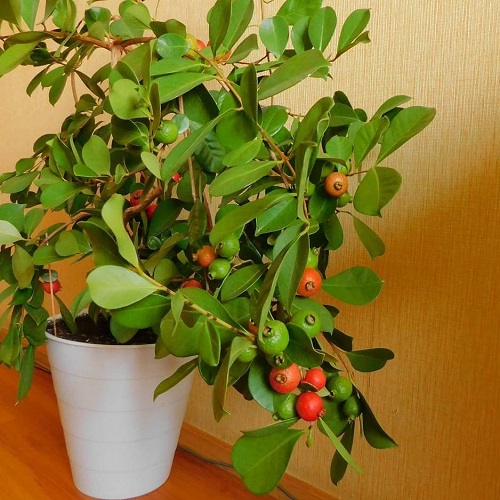
Botanical Name: Psidium cattleyanum
USDA Zones: 9-11
Cattley guava, also known as strawberry guava, is a small fruit tree that is native to South America. The fruit is small and sweet and has a flavor similar to that of a strawberry.
Here is how to Grow Guava in Pots
19. Cedar Bay Cherry

Botanical Name: Eugenia reinwardtiana
USDA Zones: 10-11
Cedar bay cherry, also known as wild cherry or coastal cherry, is a fruit tree that is native to Australia. The fruit is small and sweet, and its tree can tolerate a range of temperatures.
20. Cempedak Fruit
Botanical Name: Artocarpus integer
USDA Zones: 10-11
Cempedak is a tropical fruit that is native to Southeast Asia. This fruit that starts with C is related to jackfruit and has a similar flavor and texture.
Find the Tastiest Fruits that Start with B here
21. Ceylon Gooseberry
Botanical Name: Dovyalis hebecarpa
USDA Zones: 9-11
Ceylon gooseberry, also known as star gooseberry or Indian gooseberry, is a fruit tree that is native to South Asia. The fruit is small and tart.
Here is the list of the best Fruits You Can Grow on a Balcony, Rooftop & Patio
22. Changunga

Botanical Name: Cnidoscolus chayamansa
USDA Zones: 9-11
Changunga, also known as Chilean hazelnut, is a fruit tree that is native to Chile and Argentina. The fruit is edible and has a sweet, nutty flavor.
23. Charichuelo
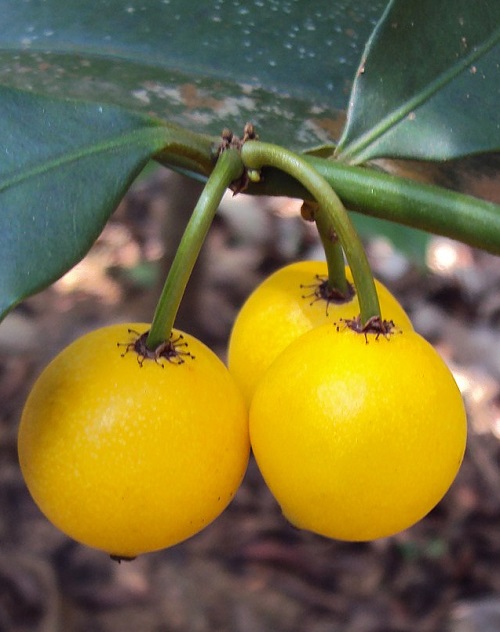
Botanical Name: Rheedia edulis
USDA Zones: 10-12
Charichuelo fruit, also known as wild mangosteen, is a small, oblong fruit with green or yellow skin and slightly tart, juicy flesh.
Check out the most exotic fruits in the world here
24. Chayote
Botanical Name: Sechium edule
USDA Zones: 8-11
Chayote is a type of squash that is commonly eaten in Latin American cuisine. The fruit is mild and slightly sweet. Chayote plants require warm temperatures and plenty of sun.
Learn about Growing Chayote in Pots here
25. Cherimoya
Botanical Name: Annona cherimola
USDA Zones: 10-11
Cherimoya is a tropical fruit with a creamy texture and a flavor often described as a mix of pineapple, banana, and strawberry.
26. Cherries
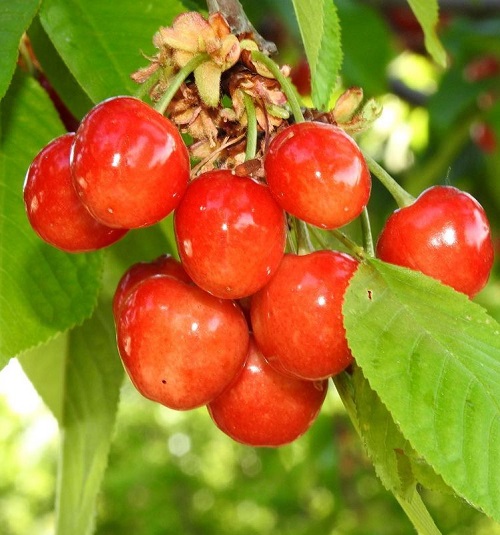
Botanical Name: Prunus avium
USDA Zones: 5-9
These little red cherries are not only delicious, but they’re also loaded with antioxidants and anti-inflammatory compounds.
Find the Best Fruits that Start with E here
27. Cherry Tomatoes
Botanical Name: Solanum lycopersicum var. cerasiforme
USDA Zones: 2-11
Cherry tomatoes are next on the list of fruits that start with C. They belong to the Solanaceae family, which includes other tomato varieties.
Here are the Names of the best Fruits That Start With S
28. Chilacayote
Botanical Name: Cucurbita ficifolia
USDA Zones: 9-11
Chilacayote is a fruit that is native to Mexico. The fruit is similar to a squash or pumpkin. Chilacayote plants require full sun and well-draining soil.
Here is How to Grow Chilacayote Squash
29. Chinese Bayberry

Botanical Name: Myrica rubra
USDA Zones: 9-11
Chinese Bayberry, also known as Yangmei or Chinese mulberry, is a small, round fruit with rough, red or pink skin and sweet, juicy flesh.
30. Chinese Quince
Botanical Name: Pseudocydonia sinensis
USDA Zones: 6-9
Chinese quince, also known as Chinese hawthorn, is the next fruit that start with C. The tree can tolerate a range of temperatures, from cool to warm.
31. Chokeberry Fruit
Botanical Name: Aronia melanocarpa
USDA Zones: 3-8
Chokeberry, also known as Aronia berry, is a fruit that belongs to the Rosaceae family. It is native to North America and is cultivated for its health benefits and culinary uses.
Here is How to Grow Aronia (Chokeberry)
32. Citrofortunella
Botanical Name: Citrofortunella spp
USDA Zones: 9-11
Citrofortunella, also known as calamondin or Philippine lime, is a citrus fruit that is native to the Philippines. The fruit is small and sour.
33. Citron
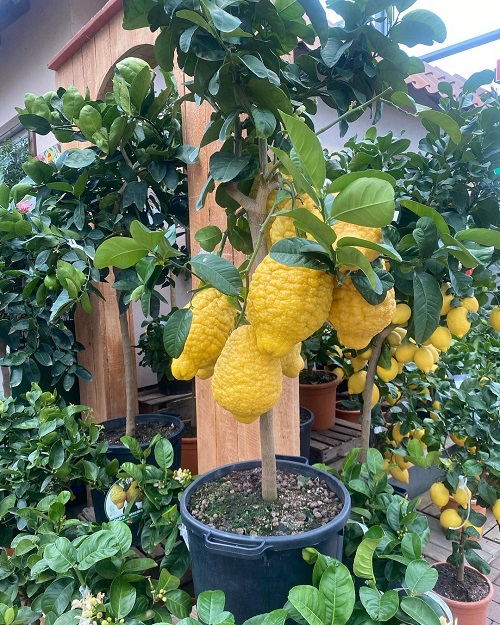
Botanical Name: Citrus medica
USDA Zones: 9-11
Citron is a citrus fruit that is believed to be the oldest cultivated citrus species. The fruit is large and has a thick, fragrant rind but is not typically eaten fresh due to its sour taste.
34. Clementines
Botanical Name: Citrus × Clementina
USDA Zones: 8-11
Clementines are a type of citrus fruit that’s similar to oranges but smaller and sweeter. They’re low in calories but high in vitamin C, making them a great snack for anyone.
Here is How to Grow Clementines
35. Cloudberry
Botanical Name: Rubus chamaemorus – L.
USDA Zones: 2-4
Cloudberry is a small orange berry that grows in cold, northern regions. It has a unique tart and sweet flavor. To grow cloudberry, you’ll need a cool climate with well-draining soil.
36. Cluster Fig Fruit
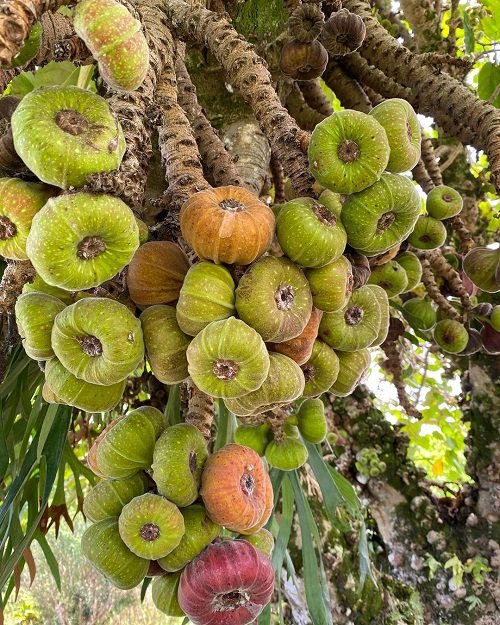
Botanical Name: Ficus racemosa
USDA Zones: 10-11
Cluster fig, also known as Indian fig or gular, is a fruit that belongs to the Moraceae family. This fruit that start with C is native to the Indian subcontinent.
Here are all the details and more on How to Grow a Fig Tree in a Pot
37. Coconut
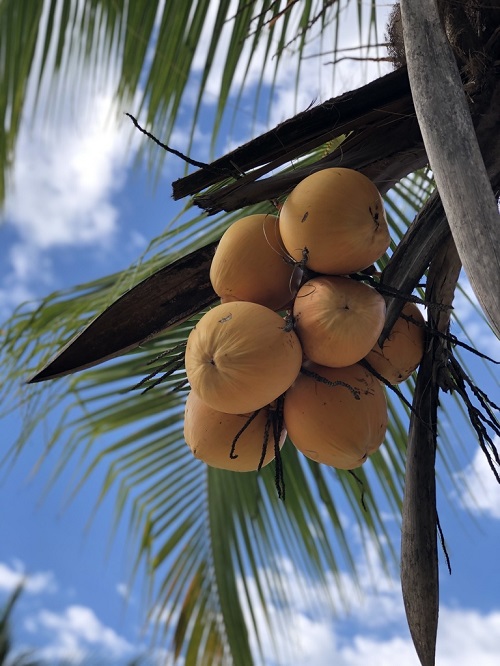
Botanical Name: Cocos nucifera
USDA Zones: 10-12
You’ve probably heard of coconut water and coconut oil, but have you ever tried eating fresh coconut? They are large, fibrous fruits that are packed with nutrients.
38. Cocoa
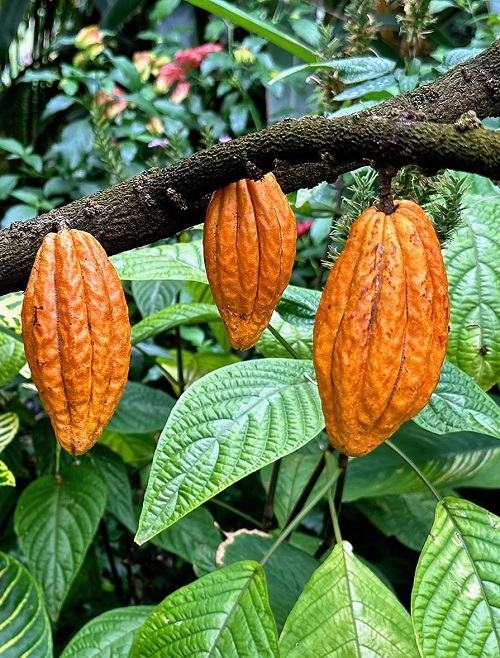
Botanical Name: Theobroma cacao
USDA Zones: 11-12
Cocoa is a tropical fruit tree that is native to South America. The fruit is used to make chocolate and other cocoa-based products.
39. Coco Plum Fruit
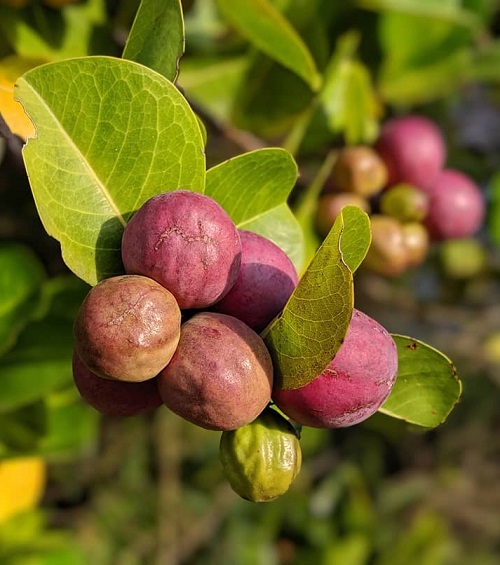
Botanical Name: Chrysobalanus icaco
USDA Zones: 9-11
Coco plum is a fruit tree native to the Caribbean and Central and South America. This fruit that start with C has a sweet taste.
40. Conkerberry
Botanical Name: Carissa spinarum
USDA Zones: 8-11
Conkerberry fruit, also known as bush plum, is a small, round fruit with red or black skin and a slightly sweet and tart flavor.
Here are the Names of 27 Fruits That Start With D
41. Cornelian Cherry
Botanical Name: Cornus mas
USDA Zones: 4-8
Cornelian cherry is a fruit tree that is native to Europe and Asia. The fruit is small and tart. Cornelian cherry trees require full sun and well-drained soil.
42. Crabapple
Botanical Name: Malus
USDA Zones: 4-8
Crabapples are small, tart apples that are often used in cooking. These small, tart apples are packed with vitamin C and fiber.
Learn How to Grow Crab Apples here
43. Cranberries
Botanical Name: Vaccinium subg. Oxycoccus
USDA Zones: 4-7
Cranberries are often associated with the holiday season, but they’re actually available year-round! Plant cranberry bushes in the spring or fall.
44. Crenshaw Melon
Botanical Name: Cucumis melo var. inodorous
USDA Zones: 3-9
Crenshaw melon is a large melon with pale green or yellow skin and sweet, juicy orange flesh. To grow these fruits that start with C, you’ll need well-draining soil.
45. Crowberry
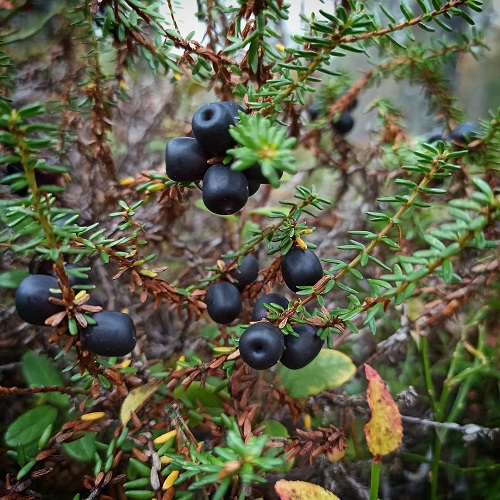
Botanical Name: Empetrum nigrum
USDA Zones: 1-8
Crowberry is a type of berry that is native to the Arctic and subarctic regions of the world. The fruit is high in antioxidants and has a tart, slightly bitter flavor.
46. Cucumber

Botanical Name: Cucumis sativus
USDA Zones: 3-8
The cucumber is a widely known and loved fruit that belongs to the gourd family. It has a crisp texture and a mild, refreshing taste.
Learn how to grow cucumbers on a trellis here
47. Currants
Botanical Name: Ribes
USDA Zones: 3-8
Currants are small, tart berries that are often used in jams and jellies. They’re high in vitamin C and antioxidants, and they’re a great addition to your garden.
48. Cupuacu
Botanical Name: Theobroma grandiflorum
USDA Zones: 10-11
Cupuacu is a tropical fruit that comes from the Malvaceae family. The fruit is large and oblong, with a thick, woody shell.
49. Custard Apple
Botanical Name: Annona reticulata
USDA Zones: 7-12
Last on the list of fruits that start with C is the Custard apple. It is a tropical fruit with a creamy, custard-like texture and a sweet flavor.

